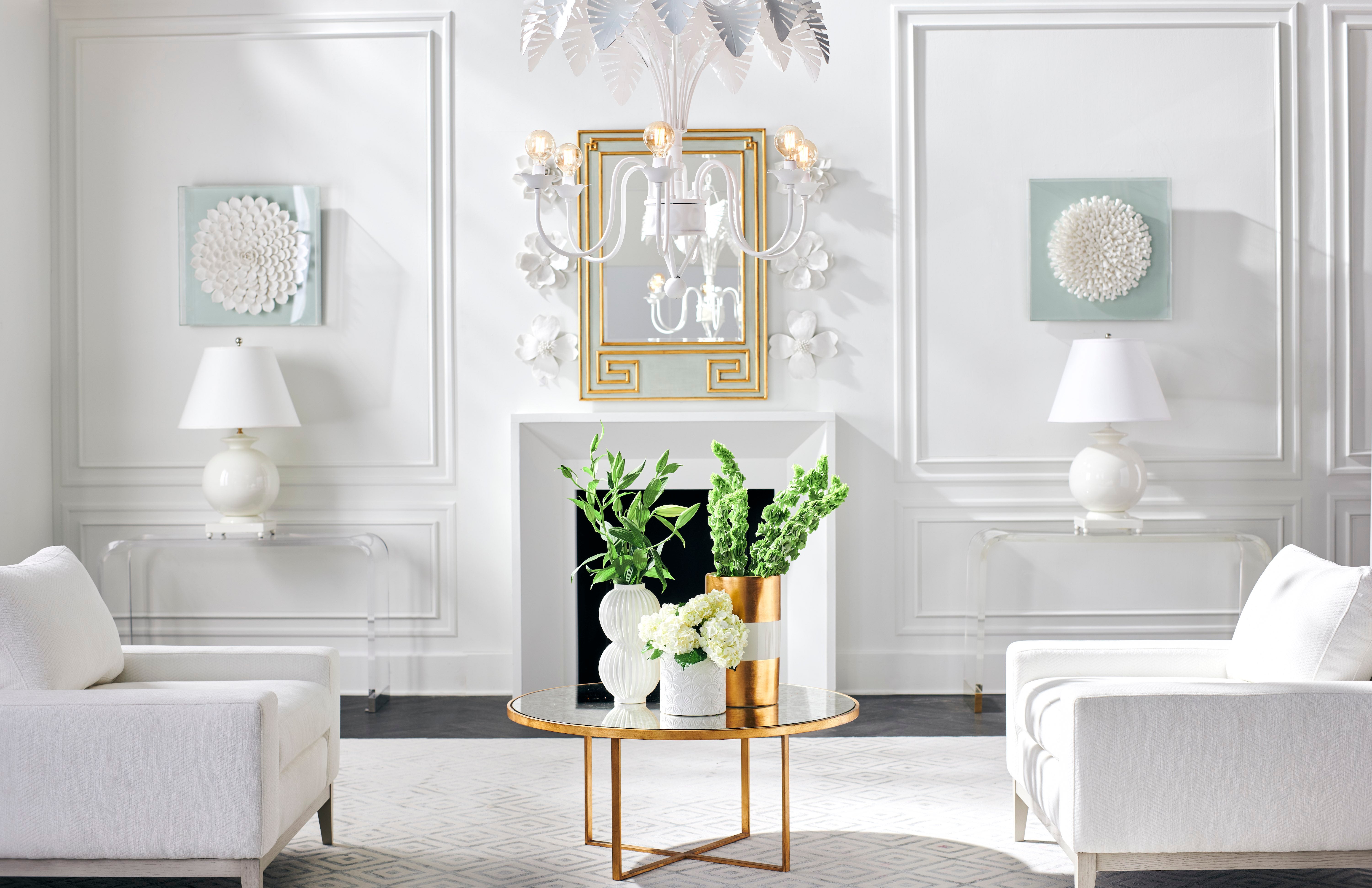At Chelsea House, design is in the details. Hand-painted motifs on silver leaf, mother-of-pearl inlays framing mirrors, antique gold fretwork trimming cachepots: Such custom touches have defined the High Point, North Carolina–based brand’s case goods, lighting, art and accessories for 50 years, making it the designer’s number one resource for magic pieces that elegantly complete a project. Dedicated exclusively to serving the trade since its founding in 1974, the company continues to delight, deliver for—and surprise—its customers.
“Sometimes you open up a drawer to discover the inside is painted fuchsia, and it just makes you smile. It’s like wearing a coat that’s lined in a beautiful silk color, but nobody knows it but you,” says Mark Ross, Chelsea House’s creative director, who oversees new product development and merchandise displays. “It’s our version of haute couture—what I refer to as ‘dressmaker detailing.’”
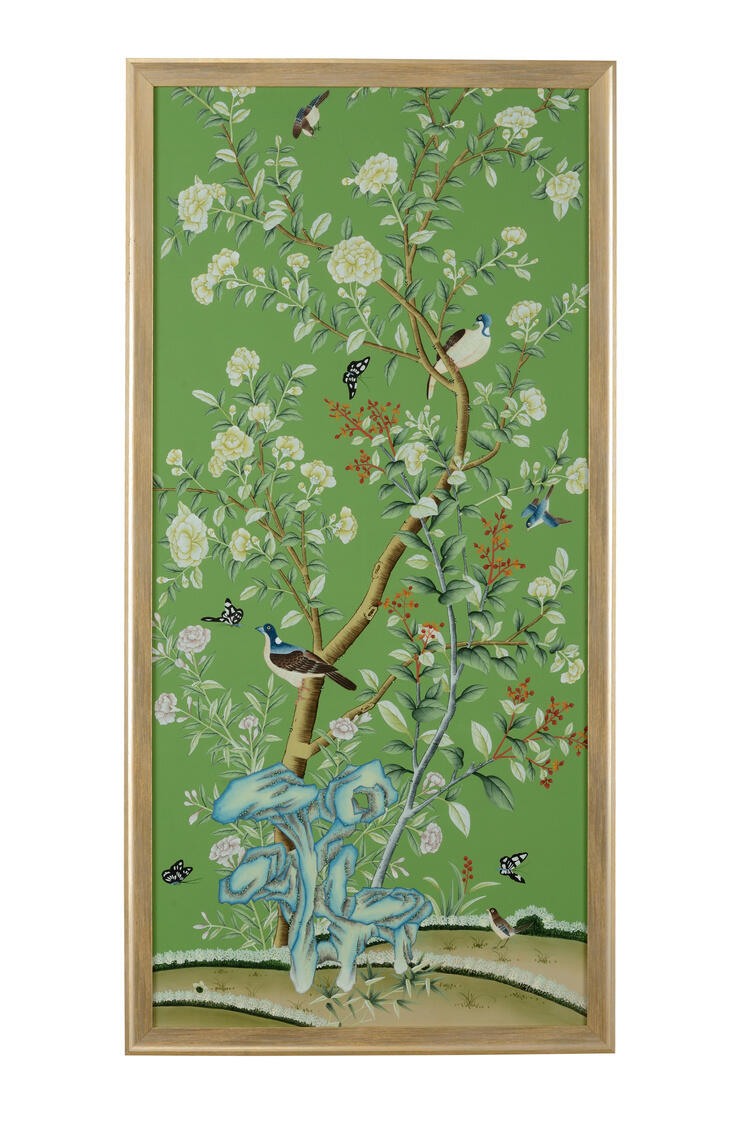
Fuchsia cabinet interiors perfectly convey the Chelsea House aesthetic, which takes classic silhouettes and elevates them with contemporary twists. “We may begin with a concept that’s informed by traditional furnishings, then build on it with a new color, material or hardware,” says Ross. Currently on his radar: raffia—and lots of it. Console tables feature the fiber woven directly onto frames, enshrouding them. “It’s a great sustainable material that has many applications,” he explains. All things green are also on the rise—“a way to bring nature inside”—and Ross is picturing different ways to play with porcelain.
“I just got back from China, and in Jingdezhen, the ‘Porcelain City,’ we looked at vases and urns, but also found some flat ceramic and porcelain panels. Instead of just hanging them on the wall as artwork, why not use them to decorate the doors of a console or buffet?” he posits. Whether the products are manufactured at the company’s partner factories in China, Vietnam, India, the Philippines, Italy or Portugal, reinterpreting artisanal techniques is always part of the Chelsea House mission, with quality underscoring every design. “Instead of a mass production line, it’s me standing alongside four expert craftspeople, and everything’s done by hand,” he says.
On the eve of Fall Market, Ross’s own hands are full indeed. Dating back five decades, Chelsea House’s portfolio boasts 2,800 SKUs, and the brand introduces about 500 designs each year, typically at the biannual event. After snowy white herons and pretty pink flamingos this past April, October portends a “much moodier” and deeply immersive atmosphere in the company’s acclaimed 12,000-square-foot High Point showroom. “Warmer, cozier, more inviting,” Ross says of his upcoming autumnal vignettes, “and heavily influenced by green.”
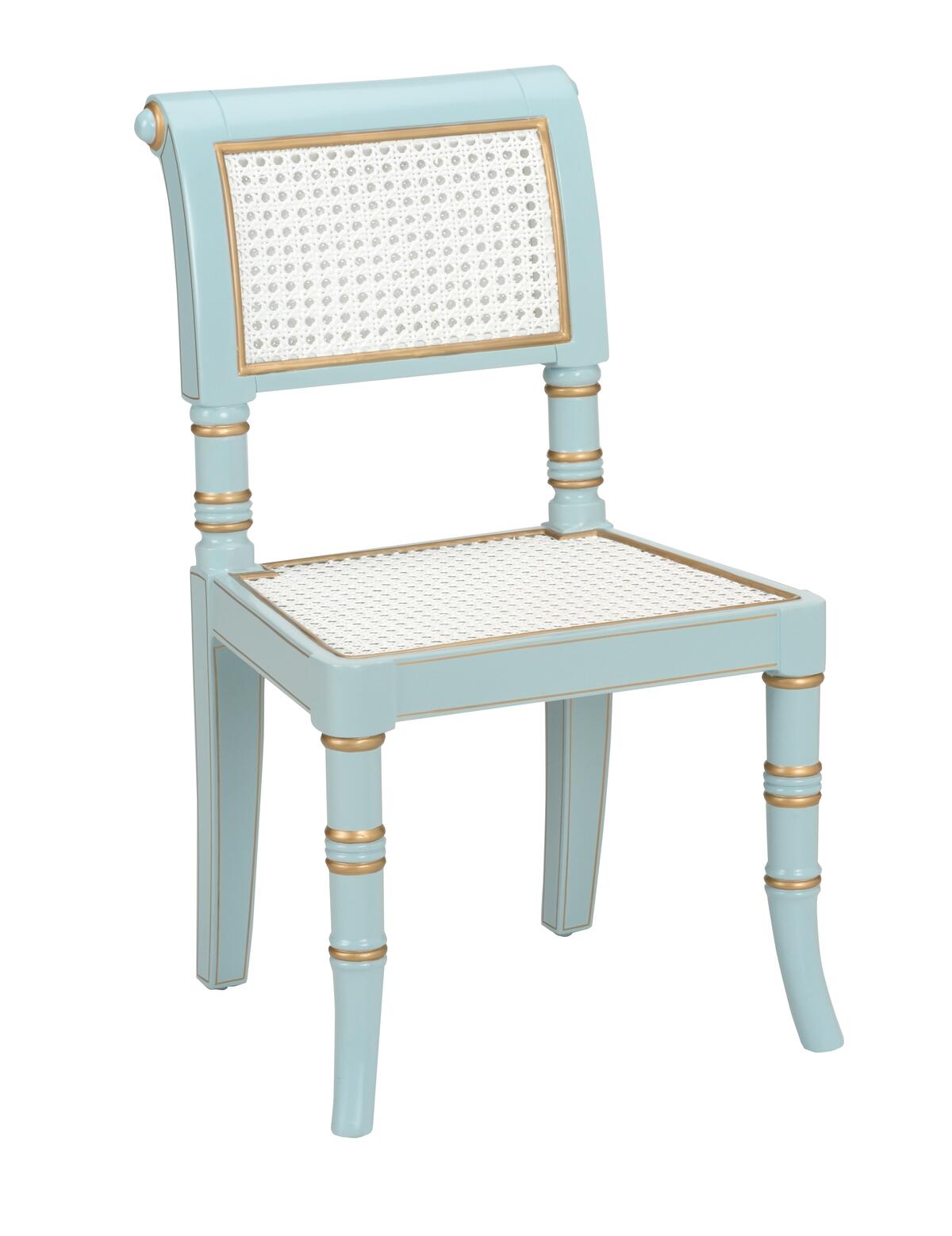
The creative director’s pull-out-all-the-stops approach to displays makes Chelsea House a Market must-see. “A good showroom should excite the customer. It should take chances, dare to feature schemes you might be a little afraid to do for a client or in your home,” he adds. “I want ’em to walk in and go, ‘Wow.’”
This season, the shock of the new will be balanced by a sense of history. To complement the product debuts, Chelsea House is celebrating its golden anniversary with fresh iterations of founder Alvin Cain’s most beloved designs, as conceived by its long-term partners. Easton, Maryland–based designer Jamie Merida, who’s been creating collections for the brand since 2016, simplifies a serpentine Georgian accent table by casting it in clear acrylic. Meanwhile, staff designer Elizabeth Wicker turns a traditional butler’s table white, sprinkles it with gold leaf, and embellishes its brass lift-out tray with a floral pattern in place of its oriental precedent. Another Georgian piece, a natural cane–back chair in black, is reborn in robin’s-egg blue with white caning and gold trim by Bill Cain—a fitting tribute to his father.
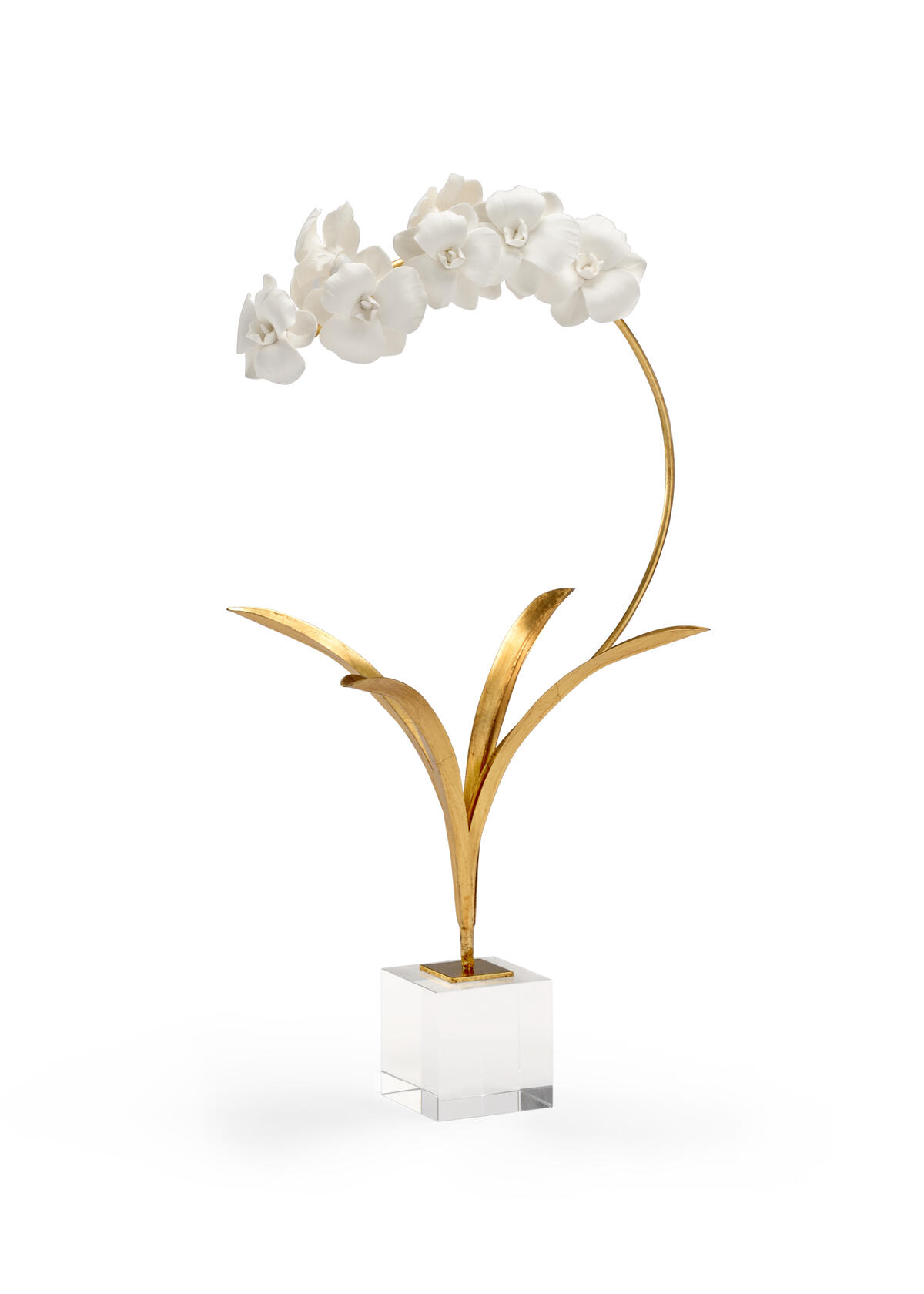
While its products are now made far from its High Point headquarters, at its roots Chelsea House still considers itself a local company. Alvin initially launched the business to meet the needs of interior designers in the region, providing them with handmade, hard-to-find period hardware and home furnishings. Upon his retirement, his son Bill took the reins, directing operations until 2011, when another North Carolinian, family-run company, Wildwood, acquired the business (freeing him to focus on design). To this day, that family ethos underpins not just product development but best practices. “You’ll always get a more tailored level of service from a small, family-owned company than a large corporation,” says Ross, who came onboard a year and a half ago. “The decision-making process is straightforward: In-house designers don’t have to go through rounds of approvals, and designer clients can count on a fast response to their requests and feedback.” To show its appreciation to its trade customer base, Chelsea House requires no minimum to open an account as well as no minimum per order, and offers total transparency in advance when it comes to freight costs: Its guaranteed program offers low rates upfront, and in-stock items ship in a day or two. White-glove customer service extends to quality control, ensuring that even the most delicate of products arrives in perfect condition.
“We try to make things as easy as possible for the designer,” says Ross. From his own experience crafting displays, he knows how common it is to encounter last-minute niches that need fulfilling. “Oftentimes when you’re doing an install, no matter how well you’ve planned out the room, some unexpected blank spot appears. Designers can dash into our showroom to find a single-item solution—no minimum buy necessary, no big deal.” The only challenge being, as soon as they set eyes on Chelsea House’s delicious details—the inlaid bone, burnished leather, hand-brushed glazes, nailhead trim, marble lamp bases and more—it’s pretty much impossible to choose just one piece.
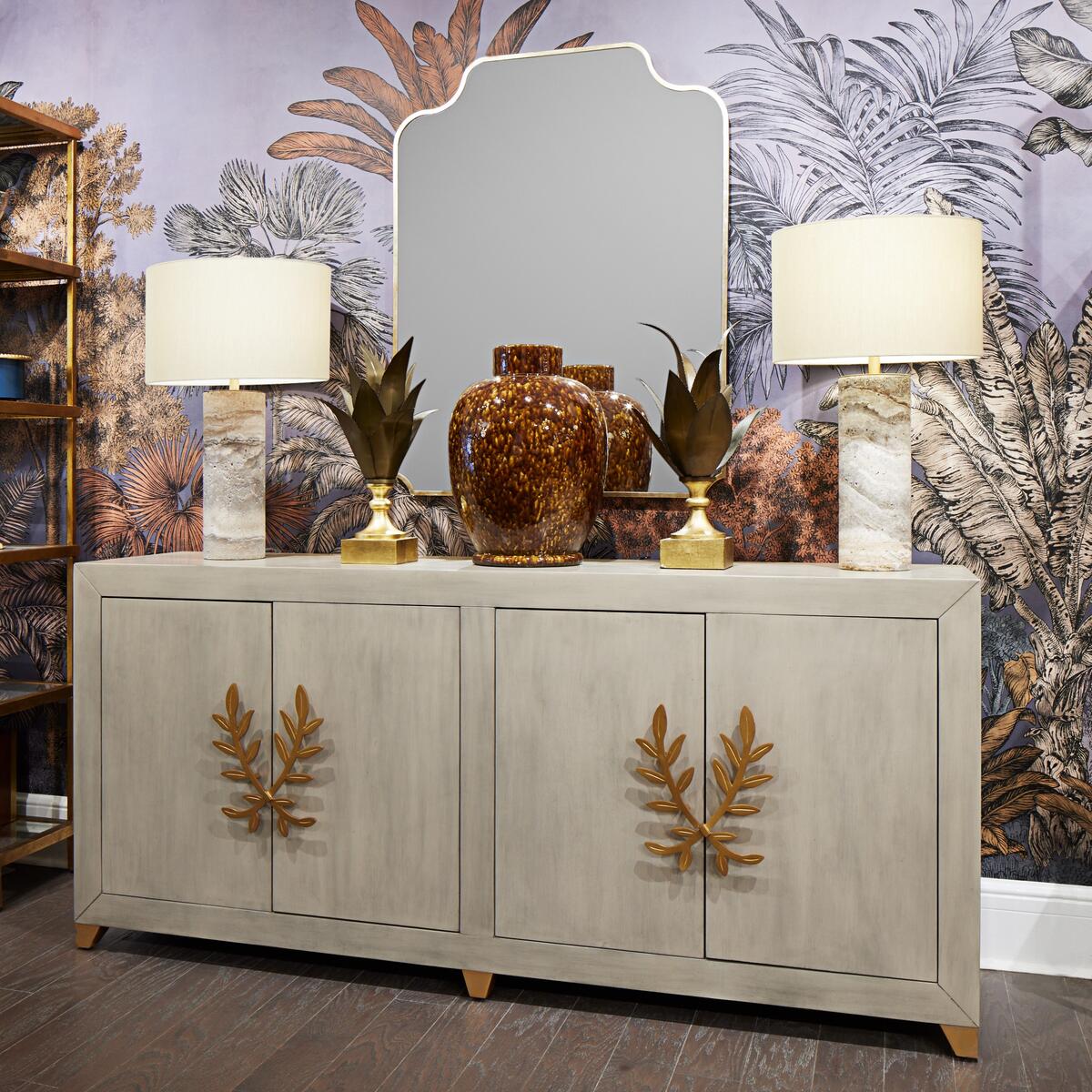
This story is a paid promotion and was created in partnership with Chelsea House.
Homepage image: For 50 years, family-run Chelsea House has been a trade-exclusive resource for case goods, artwork, accent lighting and accessories | Courtesy of Chelsea House
















